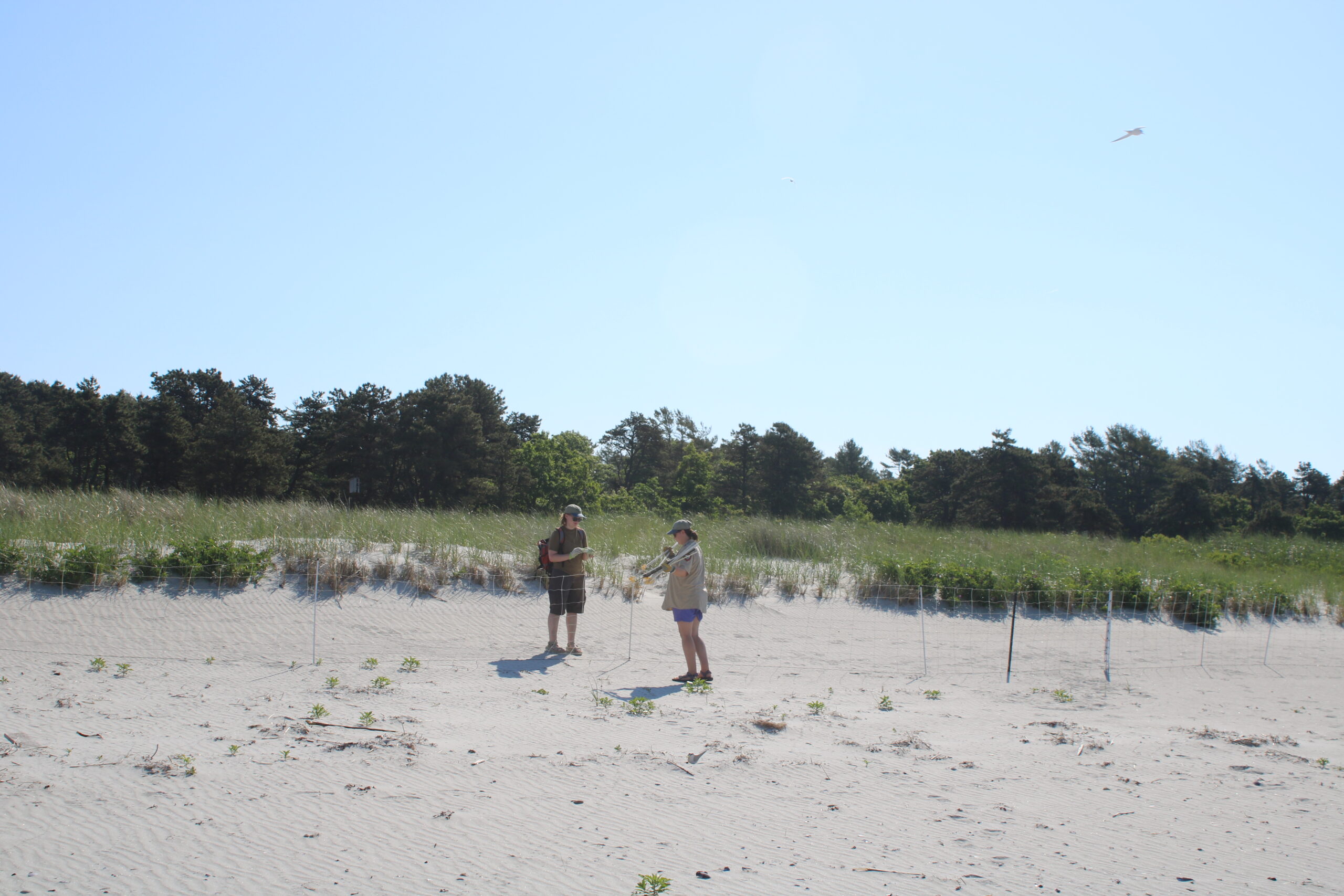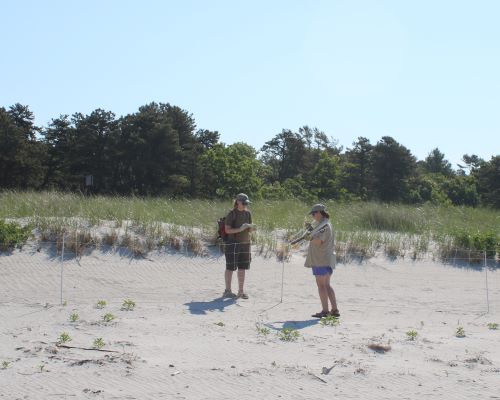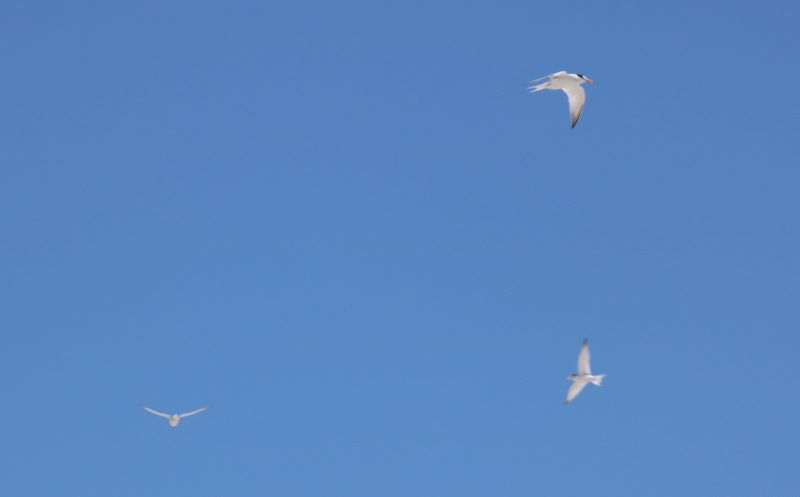
While we often focus on our Piping Plover friends, another endangered species we protect is Least Terns. Least Terns are small seabirds listed as endangered in Maine; they were the first species listed under Maine’s own Endangered Species Act. Least Terns and their more abundant cousins, Common Tern, can often be seen flying gracefully over water foraging for fish along the beaches, harbors, and marshes. Least Terns are Maine’s smallest tern species and are often seen flying inshore in search of fish when not tending to eggs and chicks at nesting sites. Both Piping Plovers and Least Terns nest and raise their young on broad sandy beach areas, and both species lay eggs directly on the sand.
Though you’ll see Piping Plovers and Least Terns on our sandy beaches, there are plenty of differences between the two. While plovers tend to be territorial and not nest directly next to other plovers, terns are colonial and can be found in groups of hundreds of birds nesting within beak reach. Unlike plover chicks which feed themselves on invertebrates on the beach within hours of hatching, tern parents feed their chicks once they hatch. Terns feed their chicks fish and things they pluck from the water, and chicks hide while parents leave the colony to find food. You may get to see terns bring fish in their beaks to chicks or to potential mates during courtship while you’re on the beach.
 A couple of weeks ago, the Coastal Birds crew installed electric fencing around a Least Tern colony on Western Beach in Scarborough. We use electric fencing to protect the terns from predators like foxes and raccoons, while ensuring the terns can freely access the fenced-off area and tend to their nests without interference. Additional stake and twine fencing has been placed in front of the electric fence to keep people safe- though it is important to note that the fence is set at a low voltage and should not pose any threat to people or animals.
A couple of weeks ago, the Coastal Birds crew installed electric fencing around a Least Tern colony on Western Beach in Scarborough. We use electric fencing to protect the terns from predators like foxes and raccoons, while ensuring the terns can freely access the fenced-off area and tend to their nests without interference. Additional stake and twine fencing has been placed in front of the electric fence to keep people safe- though it is important to note that the fence is set at a low voltage and should not pose any threat to people or animals.
The entire crew worked together on this project, transporting fencing material, solar powered batteries, and stakes to secure the fencing in place. In advance of construction, crew members surveyed the beach for active tern nests, birds, and any plover scrapes or nests in the area.
Least Terns are beautiful birds that are fun to watch, but be sure and keep your distance from roped off nesting sites and birds. The original “helicopter parents”, terns are very defensive of eggs and young and will do whatever they can to deter potential predators. They see people as a threat, so they will dive bomb and even poop on people that get too close to their nests! While the crew may consider this as a sign of good luck, most of us like to avoid that!
We’ve already seen the first couple of tern chicks hatch recently and are excited for more to hatch in the coming weeks. Check back here for more posts about our terns and plovers and follow our Instagram @mainecoastalbirdsproject for updates!

